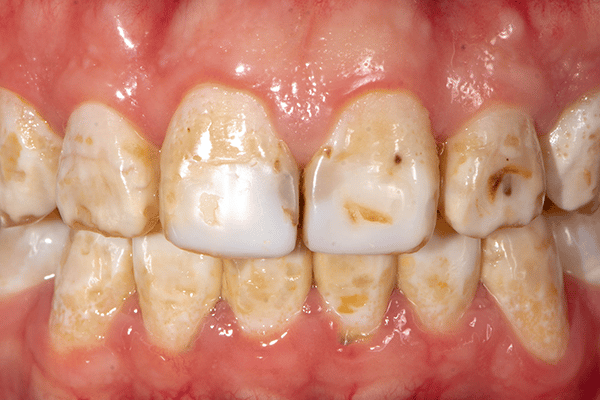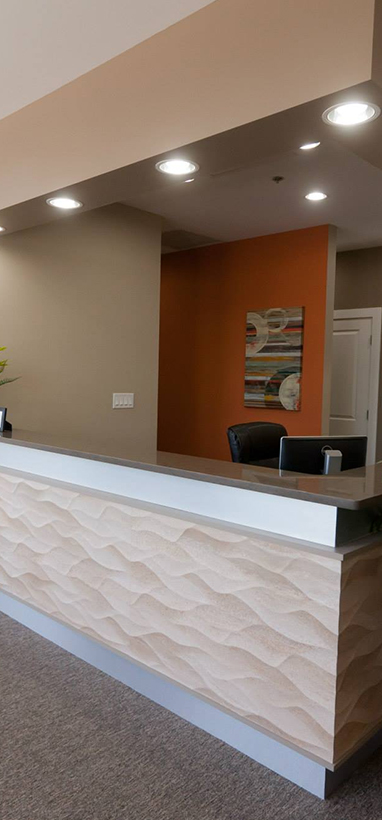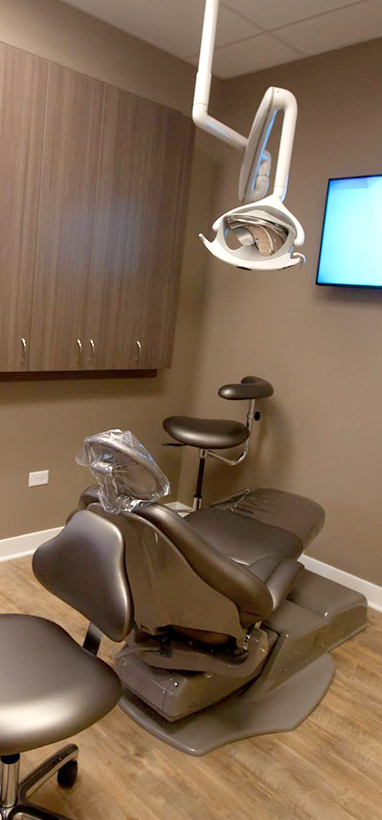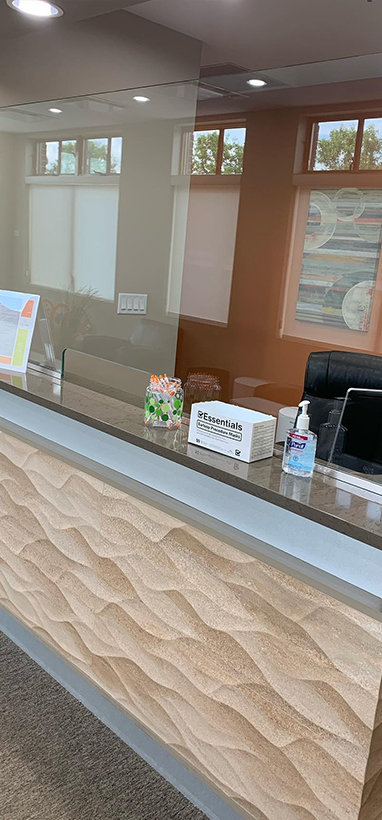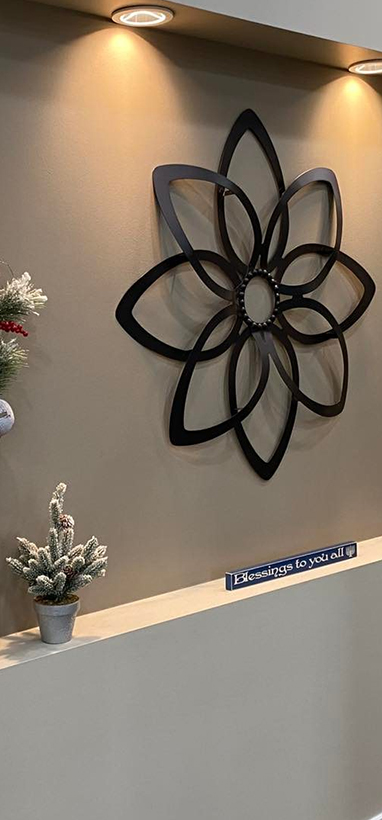1516 Legacy Cir, Naperville, IL 60563
Diastema (Gap Teeth): Causes and How to Fix Gap Teeth

A diastema is referred to as an opening or space between two teeth. Gap teeth, or diastema, can occur between any teeth but is best known for affecting the front two teeth. Having a diastema does not necessarily mean there is anything wrong with your teeth. Although, if the diastema is due to an underlying dental concern, treatment may be necessary. In the case of supermodel Lauren Hutton from the ’70s, it was considered her imperfect beauty. In some cases, whether or not to fix big gap teeth is really up to the beholder. For some, they just don’t like the look of the diastema or gap. If you would like your gap gone, you’ve come to the right place, we have lots of treatment options for you that we will discuss later in this blog.
At Living Well Dental Group, we provide comprehensive dental services in Naperville, Illinois. We’re committed not just to providing the best dental treatment, but also to ensuring we offer great advice and lots of resources right here on our site.
In this piece, we’ll explore the causes of gap teeth, the main symptom, and some possible treatments.
What Is Diastema?
The term “diastema teeth” refers to two or more teeth separated by larger-than-normal gaps. Most often it’s noticed when the diastema teeth are the front teeth. While it’s perfectly normal for this to occur, it’s one of the most common cosmetic issues people have with their teeth. There are ways to fix big gap teeth, and some typical causes that you should be aware of that may help you stop the diastema from getting worse.
Thankfully, though, most causes of diastema are not an immediate cause for concern and typically won’t have an impact on your health.
It’s also important to note that in children, a diastema is much more common and is often resolved once the baby teeth fall out and are replaced by adult teeth. The fact that baby teeth are significantly smaller means that as a child gets older, gaps between the teeth become visibly larger until the baby teeth fall out.
Causes of the Gap Between Teeth
In many cases, the gap in front teeth is caused by factors out of your control. There are plenty of other causes, however, that you can control – meaning you could prevent diastema, or at least stop the gaps from becoming more visible.
Here are some of the most common causes of diastema.
Labial Frenum Overgrowth
An overgrowth of the soft tissue between the upper front teeth is the most common cause of a gap in front teeth. The soft tissue, as it grows too much, causes a protrusion, and pushes the teeth apart from each other.
Gum Disease
Gum disease, or periodontal disease, consists of inflammation in the gums surrounding your teeth. It means that the gum and the tooth are no longer as firmly attached as they were, and the general health of your gums deteriorates over time.
Gum disease is caused by lots of factors, usually by bad habits and poor dental hygiene, and as it progresses it can result in teeth moving from their natural position.
If you suffer from bad periodontal disease, you may notice a gap in the bottom teeth and top teeth, and not just your two front teeth.
Bad Habits
Bad habits also have a big impact on diastema. Unfortunately, many of these habits develop in early childhood, making them hard to stop. Thumb sucking in children is one of the biggest causes as it puts pressure on the upper teeth and pushes them forward creating spaces or diastemas between your front teeth.
In adults, a compulsive pushing of the teeth by the tongue can have the same effect. If you find that your tongue naturally rests behind your two front teeth, it could be putting pressure on the teeth and forcing them to move over time. This can cause a gap in front teeth or a gap in bottom teeth.
Dental Hygiene Problems
Poor dental hygiene, as we’ve mentioned, causes gum disease. And gum disease can cause diastema! It’s important to floss regularly and brush twice daily to ensure that tartar and plaque do not build up and cause damage to your gums. Healthy gums are one of the best ways of preventing gaps in your teeth.
Smaller Sized Teeth
The disproportionate size of your teeth to the size of your jaw can create a diastema. For example, sometimes you will get Mom’s smaller teeth and Dad’s larger jaw which will leave the jaw to teeth size disproportioned. This means the teeth will sit naturally further apart.
A Tooth Missing
Missing a tooth either through extraction or congenitally missing a tooth can leave gaps in between your teeth.
Symptoms and Diagnosis
For most cases, the only indication of a diastema is a gap in front teeth. But a diastema can be the symptom of an underlying condition such as gum disease (also called periodontal disease). Gum disease can cause damage to the supporting structures of your teeth causing the teeth to become loose and spaces (or diastemas) to develop. Periodontal disease can cause bleeding gums, receding gums, and other noticeable painful conditions.
Diastemas caused by periodontal disease can be prevented by regular dental visits and good oral hygiene. If you have periodontal disease you may need non-surgical scaling and root planning or even surgery in more severe cases. Both of these procedures can be completed with minimal pain at Living Well Dental Group.
How to Get Rid of Gaps in Teeth?
If the gap is something that you would prefer to get rid of, there are many treatment options to close the gap in teeth.
Clear Aligner Therapy (Invisible Braces)
Clear aligners therapy such as ClearCorrect can be used to fix gaps in teeth. It’s a great way to straighten teeth or close gaps without the use of traditional braces. The process uses a series of aligners/retainers to gently straighten teeth and/or close gaps. ClearCorrect is a procedure that can be done at Living Well Dental Group. All you need to get started is a quick digital scan of your teeth. No messy impressions needed.
Frenectomy
A frenectomy is a procedure that removes the excess tissue protruding between the two front teeth, removing the pressure that causes diastema. This is a surgical procedure that can be completed at Living Well Dental Group by our expert periodontist.
Same-Day Smile Makeover
Using Crowns or Veneers, a same-day smile makeover can discreetly transform your smile to fix gaps in several teeth or for diastema closure between two teeth. This procedure can be completed by our expert Naperville dentist at Living Well Dental Group, in just one visit. With our CEREC technology, you can leave the same day with the smile you’ve always dreamed of.
Teeth Gap Filling
Professional teeth bonding for gaps uses a composite resin to widen a tooth and make the gaps appear smaller. This is a cosmetic procedure that doesn’t change the positioning of the tooth but effectively closes the gap.
Scaling and Root Planning
Scaling and root planning or gum surgery may be necessary if the diastemas are due to periodontal disease. Our team at Living Well Dental Group can help you treat and manage any of your periodontal concerns.
Teeth Gap Bands
At home, people choose to use teeth gap bands, but Living Well Dental encourages people to visit the dentist and see how we can fix gaps in teeth professionally and safely. This should not be a DIY fix for gaps or spaces between your teeth.
Implants
Implants can be used to close gaps created by missing teeth.
When deciding how to close the gap in teeth keep in mind that a full dental exam should be done first to determine why the gap is there.
Conclusion
A diastema alone is not an indicator of a problem with your teeth but it can be a sign of an underlying condition. That’s why it is important to have a diastema checked by a dental professional. The professionals at Living Well Dental Group can help you determine if treatment is needed.
Get Expert Help for Diastema in the Chicagoland Area!
Looking for help with diastema closure in Naperville or the wider Chicagoland area? At Living Well Dental Group, our team has years of experience and the expertise required to ensure you get the right advice.
We provide orthodontics and invisible braces, cosmetic surgery, and periodontal services to ensure your teeth look great and stay healthy.
For a consultation on diastema teeth treatments that truly help, be sure to call our team today at (630) 505-1516 to schedule an appointment online!



